Similar Posts
Having completed the first tour sponsored by the Orthodox Arts Journal, which took place in June of 2023, I’ve been considering how to share some of the four-thousand photographs I captured. The tour was a resounding success, visiting thirty monasteries and many other churches and cathedrals. Because of the volume of splendid things we saw, I have decided to publish a series of photojournalism posts. Each one will highlight a specific aspect or category of liturgical arts, illustrated with photos from the tour.
I will begin with a group of wide-angle interior portraits, carefully chosen to illustrate the gorgeous play of light and shadow in these fine old churches. Medieval Orthodox architecture is spatially complex in the extreme, with a hierarchy of illumination – brightest at the central dome, and fading to shadow and mystery at the periphery. It was clear to us on this tour that the play of natural illumination is perhaps the single most distinctive and moving feature of these ancient churches. The light always calls first attention to the iconostasis, the liturgical centerpiece of the space, while the darker outer spaces contribute an ethos of infinite expanse, eternal mysteries, hesychastic stillness.
Our tour began in Belgrade where the churches are not so old. I was interested to see that even the baroque churches of recent centuries, which lack the spatial complexity of medieval architecture, exhibit incredible beauty of light. The windows are carefully placed to illuminate the iconostasis from the side, causing the carving and gilding to sparkle with brilliant light and shadow. It is with these relatively ‘modern’ Belgrade churches that we will begin, then moving south to the fortified Serbian monasteries. Part 2 will address Kosovo and Metohija, and Part 3, North Macedonia.
Most of my photos were taken using a Laowa 20mm zero-distortion shift lens, which allows for wide-angle images with no vertical distortion in the perspective. My Nikon D750 camera optimizes rich colors and high contrast, to emphasize the natural play of light and shade. Many thanks to our local guide, Ivan Krucican, for negotiating permission to take pictures, and for requesting that electric lights be shut off so that we could enjoy the churches in natural illumination.

Ružica Church in the Belgrade Fortress. First built in the fifteenth century, redesigned in 1869, and fully rebuilt in 1925 after war damage.
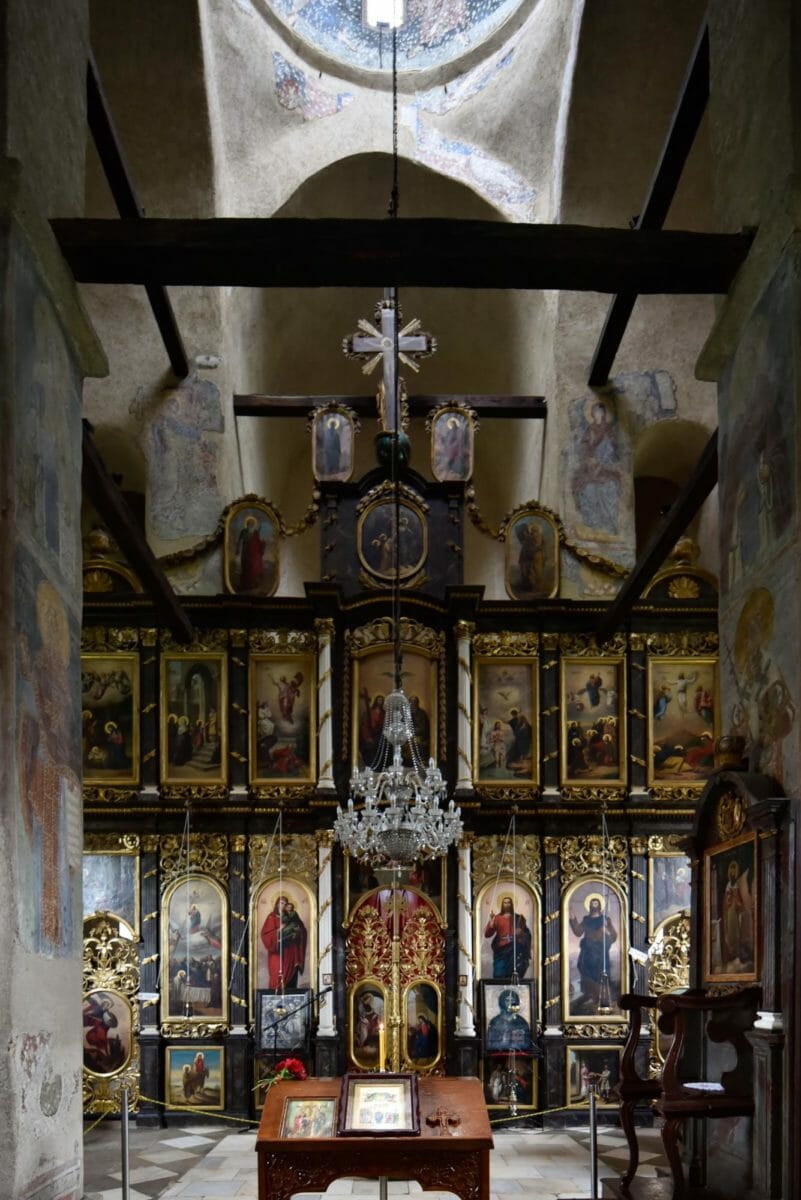
Ljubostinja Monastery, built 1388-1405 by Princess Milica, the widow of Holy Prince Lazar, as a refuge for noblewomen who had lost their husbands in the battles with the Turks. The iconostasis was painted in 1822.
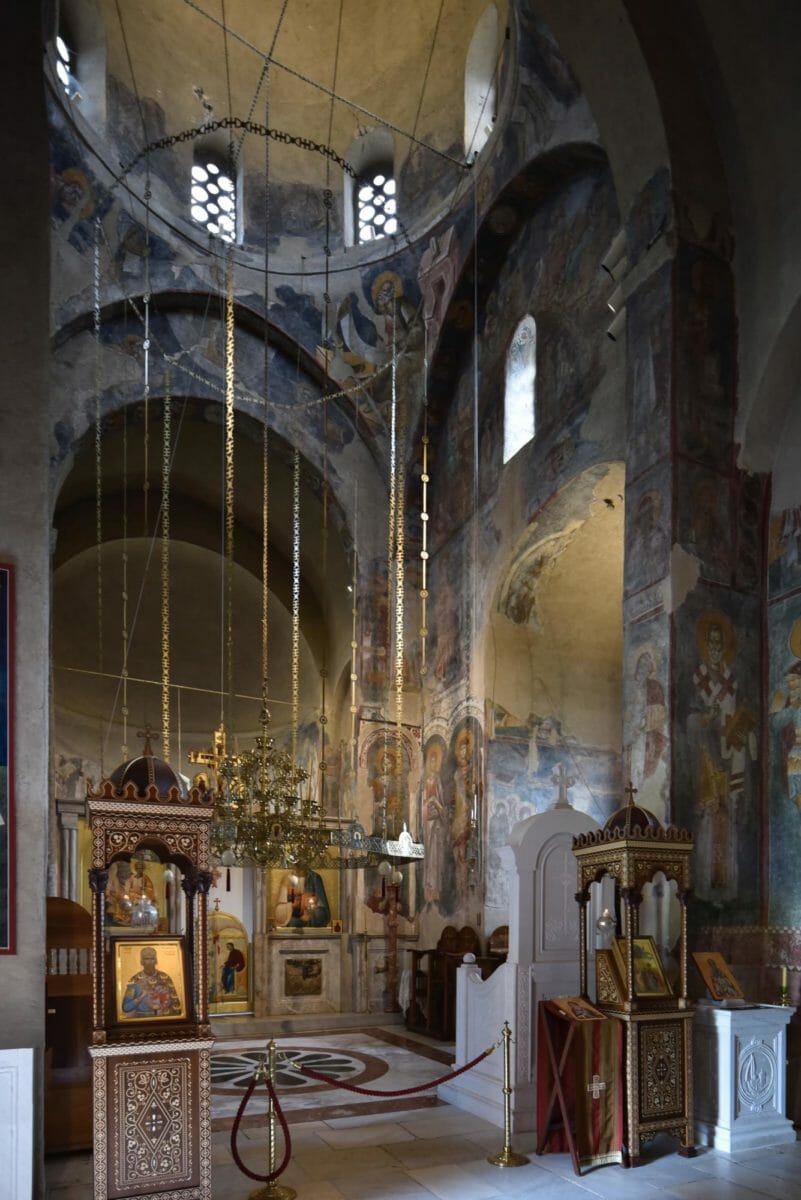
Žiča Monastery, built 1208-1230. Built by Saint Sava as the coronation church for the Serbian Kings – constructed just a few years before Westminster Abbey, and for the same purpose.
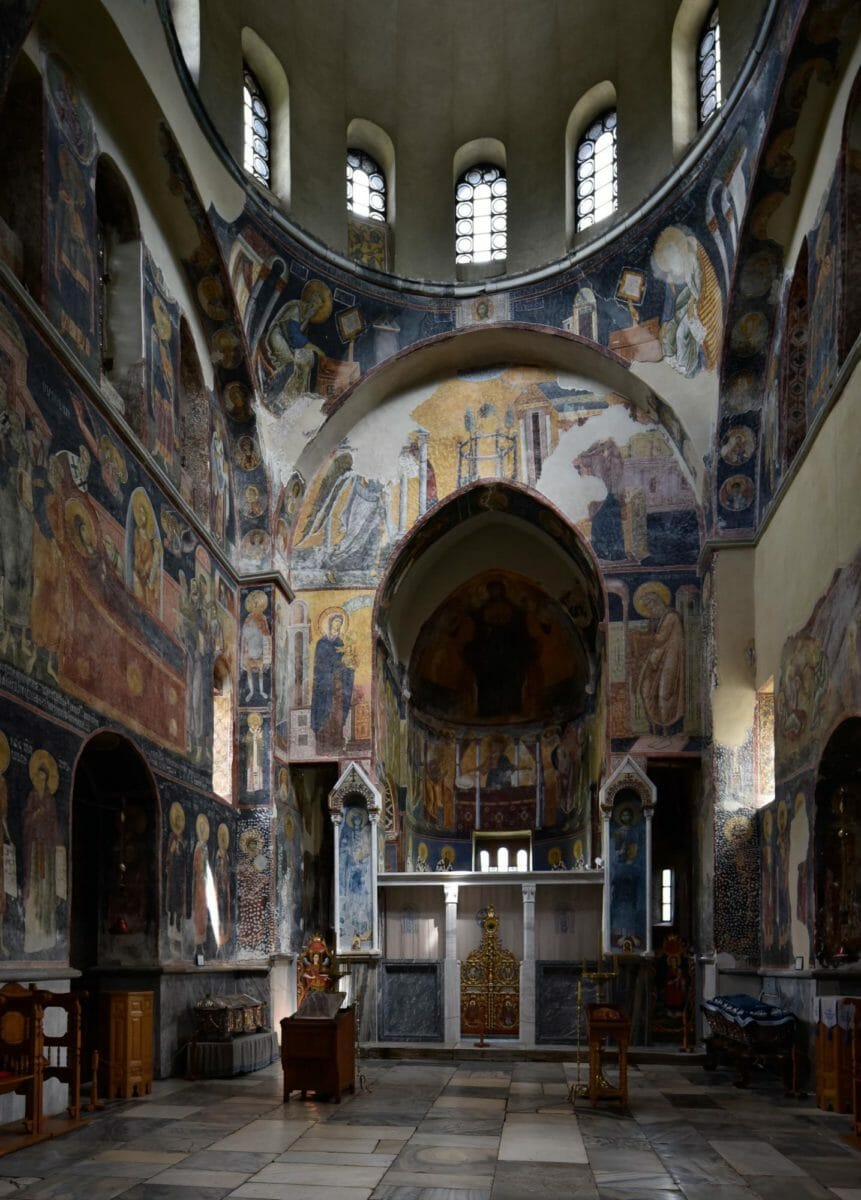
Studenica Monastery, built 1190-1196. The first of the great monasteries of the independent Serbian state, built by Saint Stefan Nemanja.
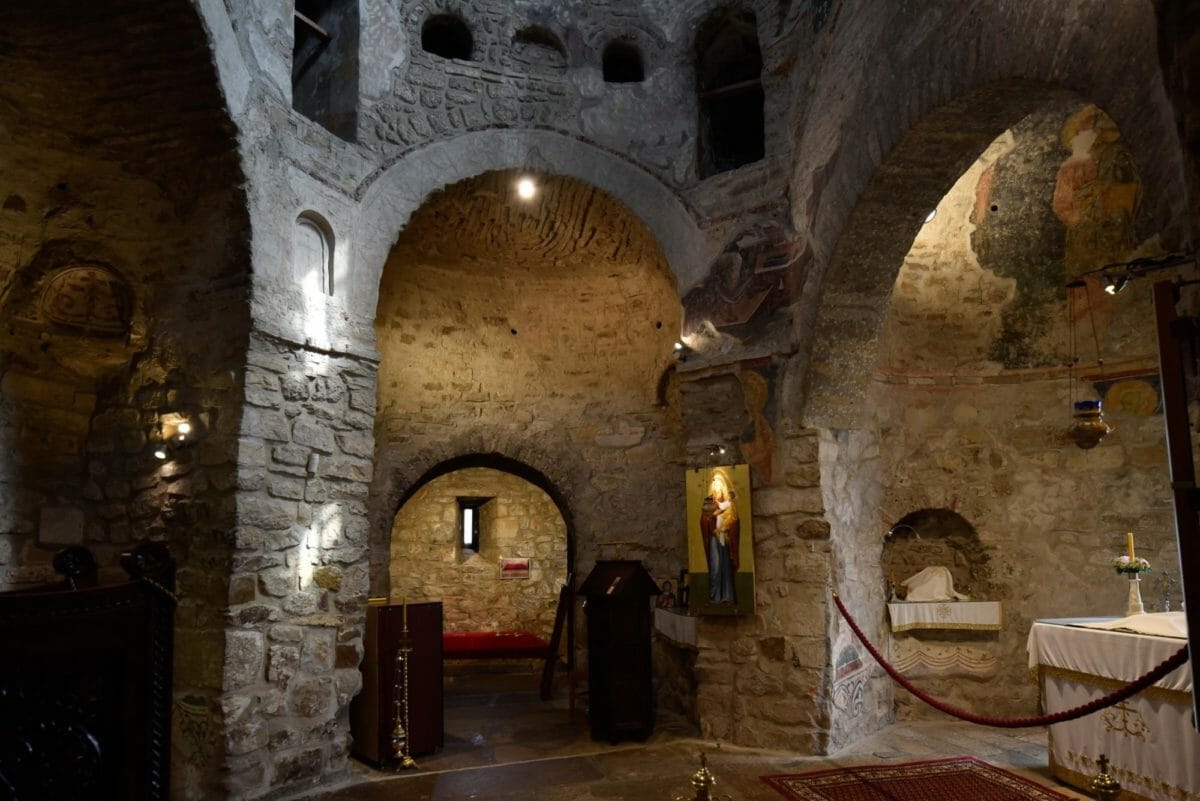
Church of the Holy Apostles Peter and Paul (Petrova Cerkva), near Novi Pazar, Serbia. Built in the 9th century – the oldest intact church in Serbia.
If you enjoyed this article, please use the PayPal button below to donate to support the work of the Orthodox Arts Journal. The costs to maintain the website are considerable.

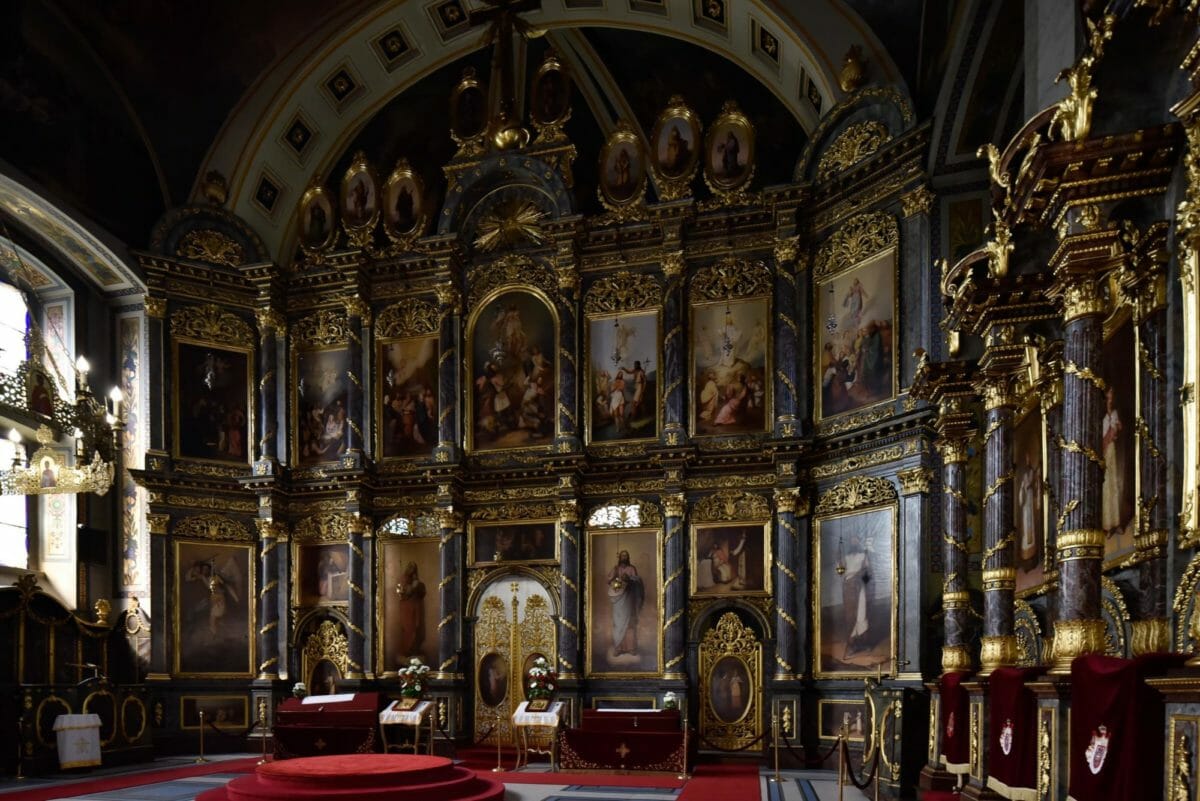
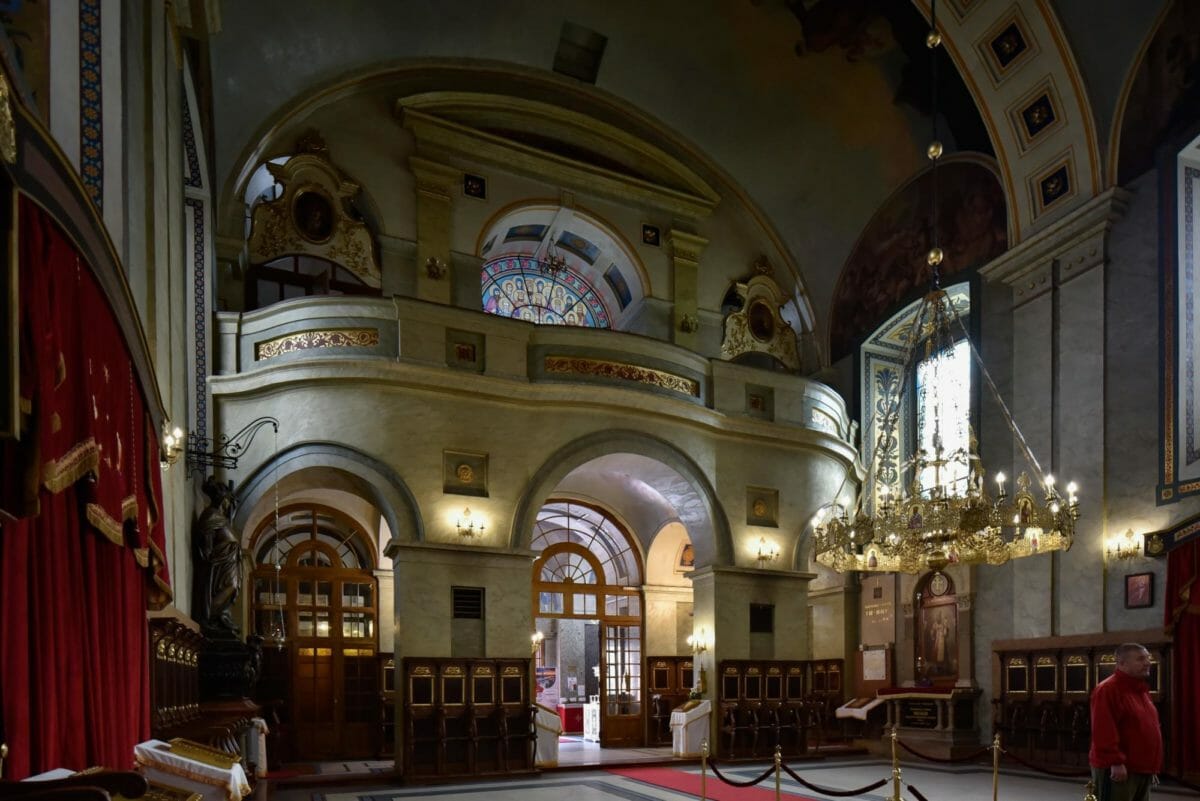
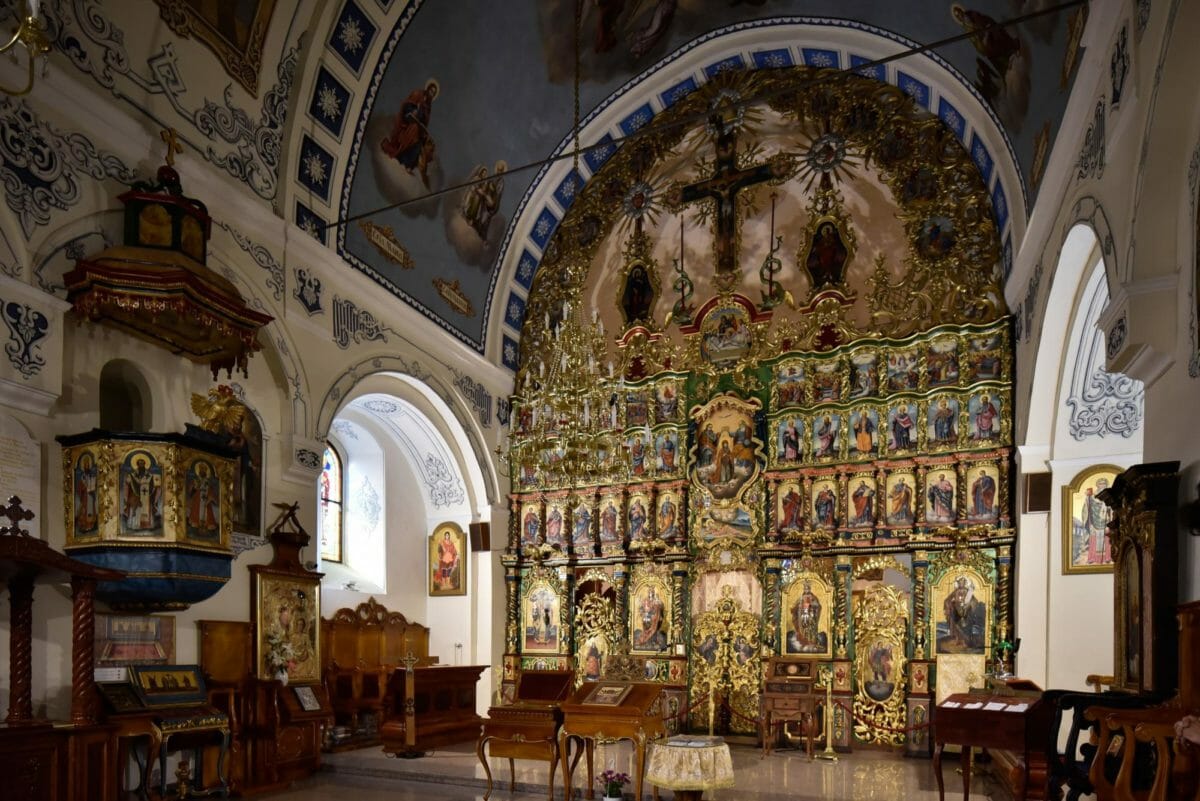
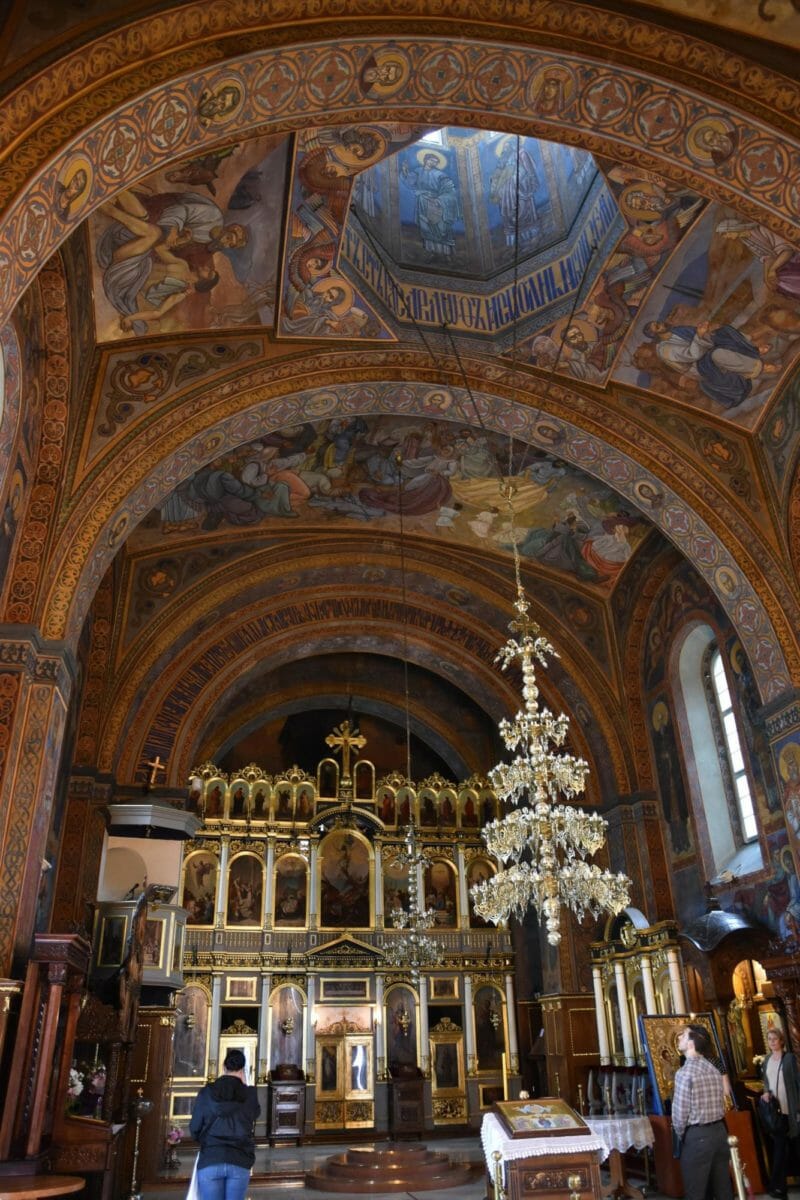
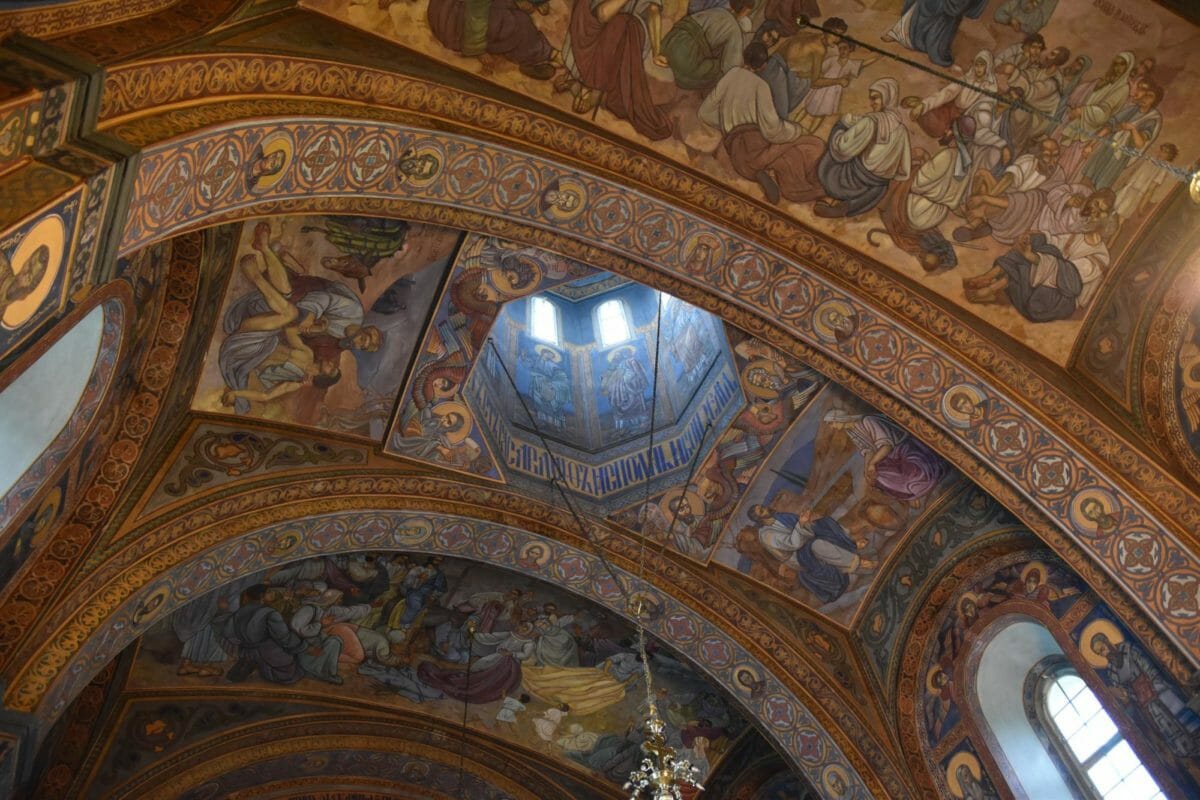
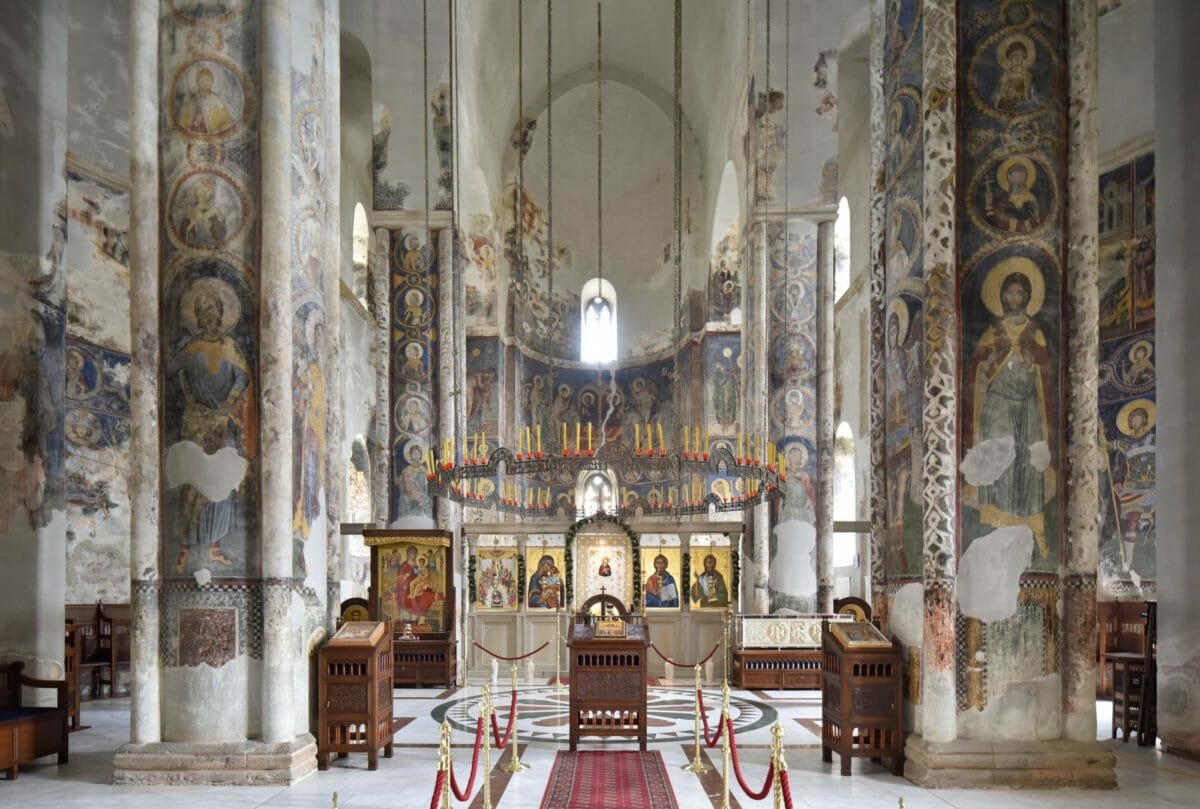
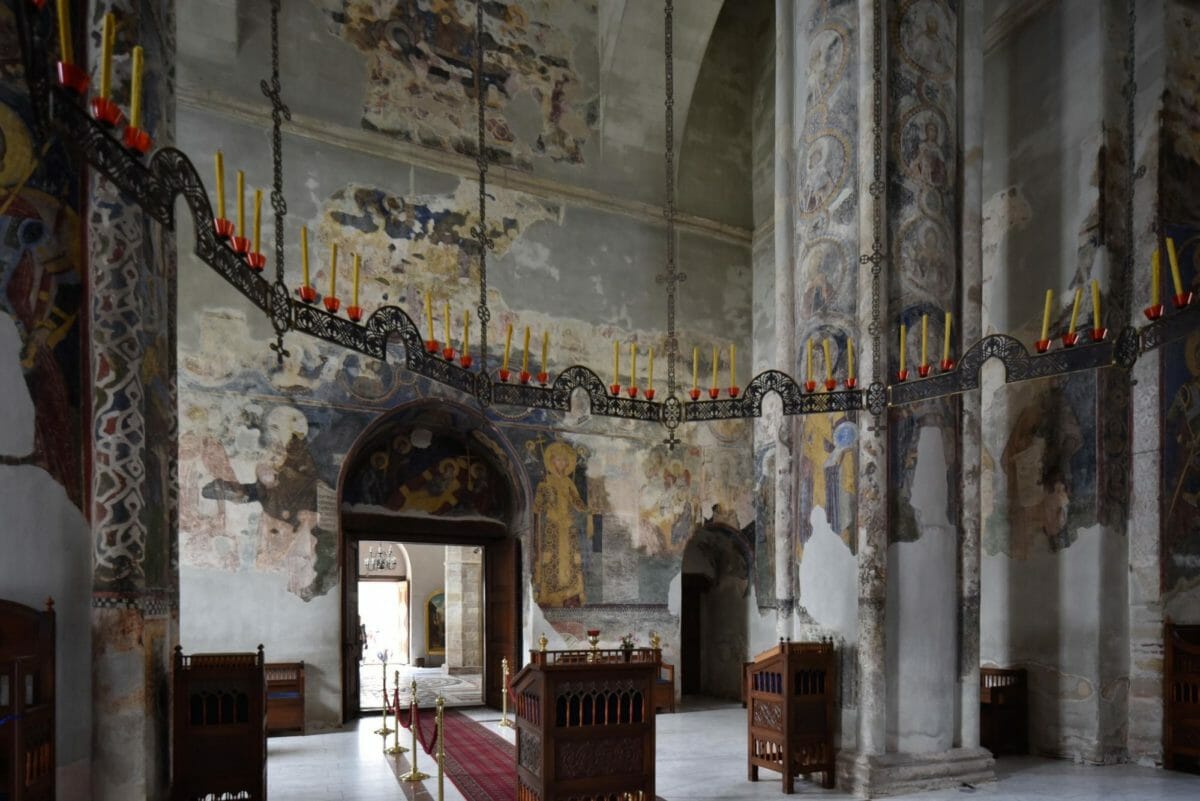
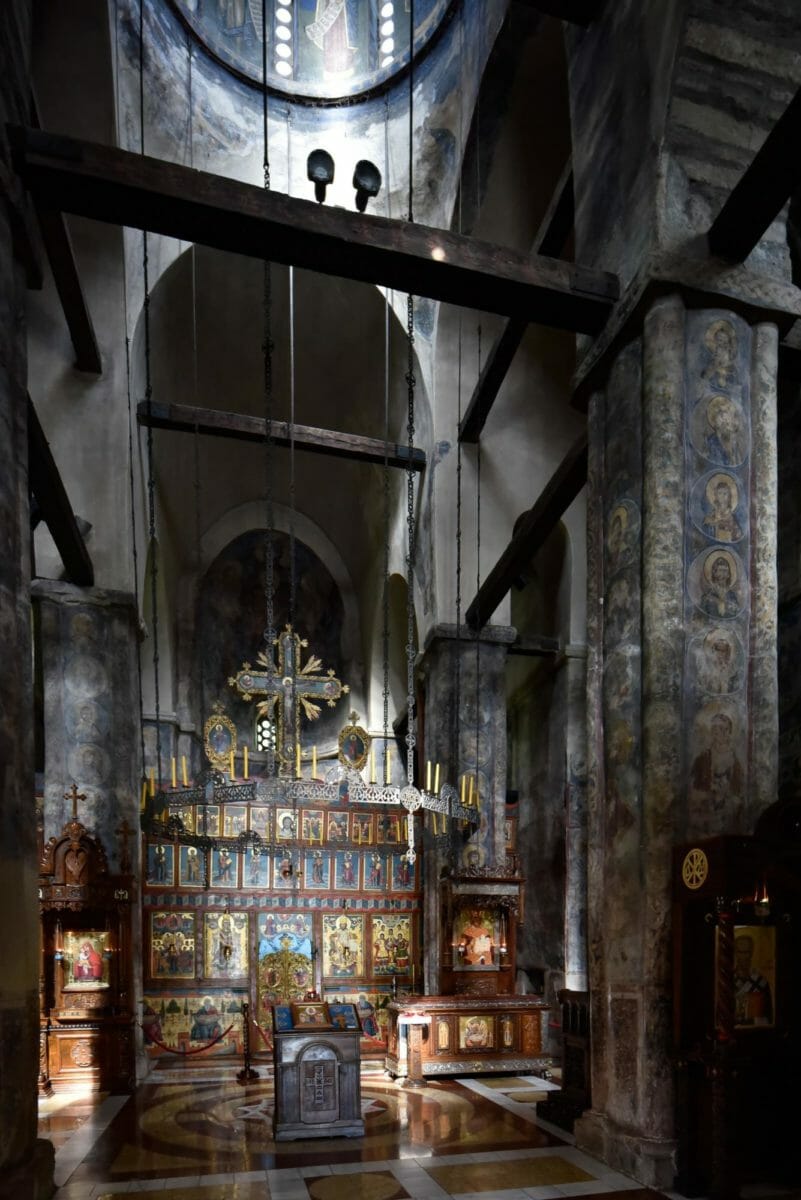
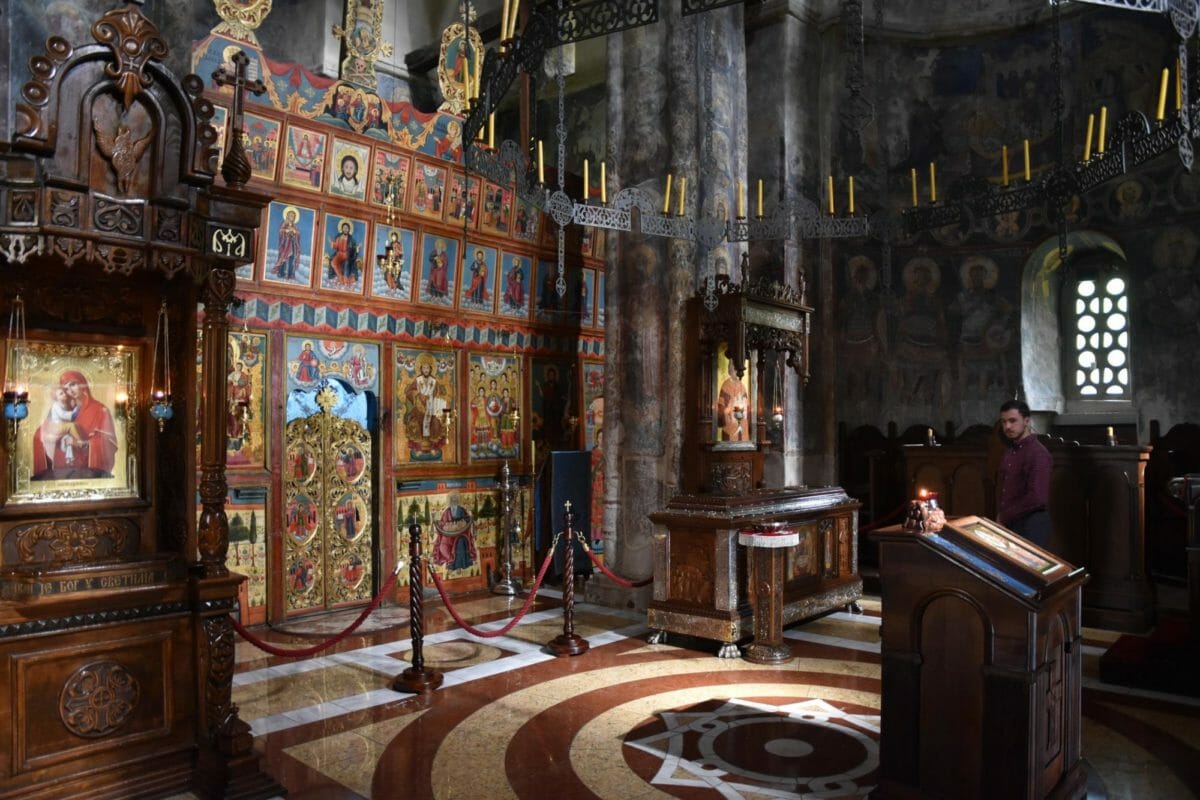
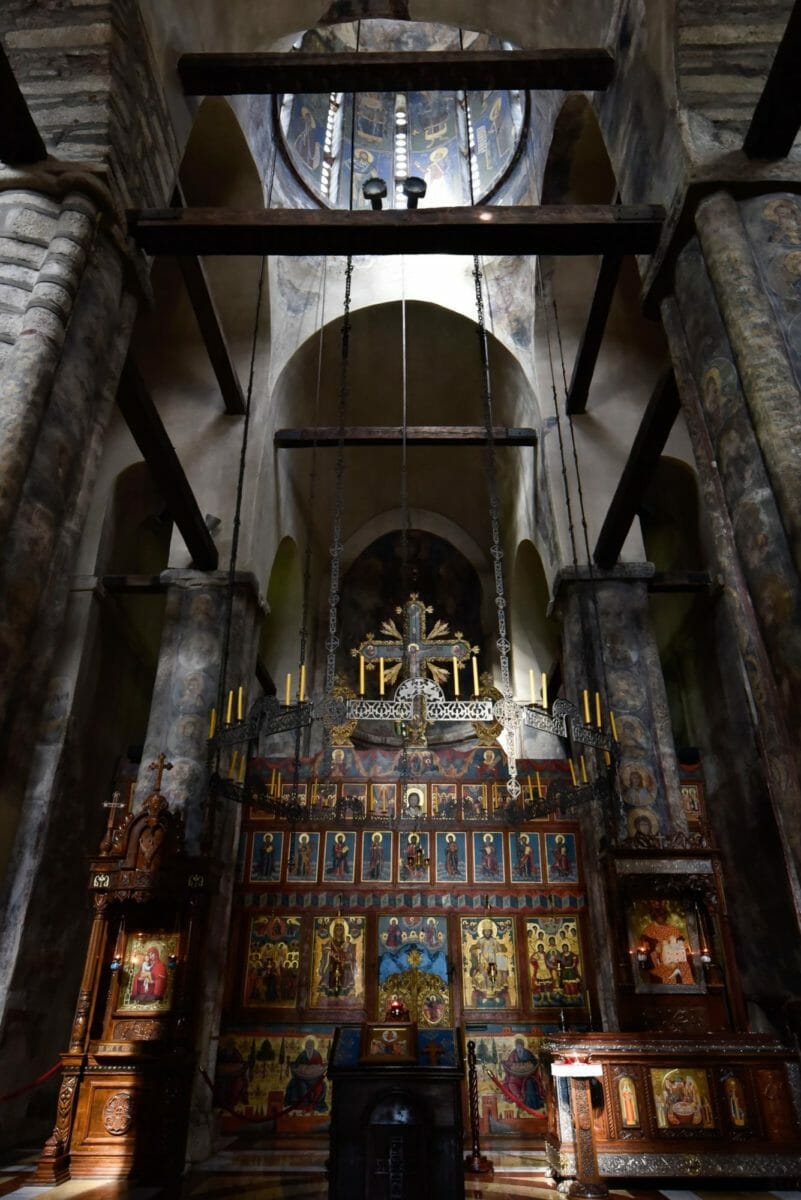
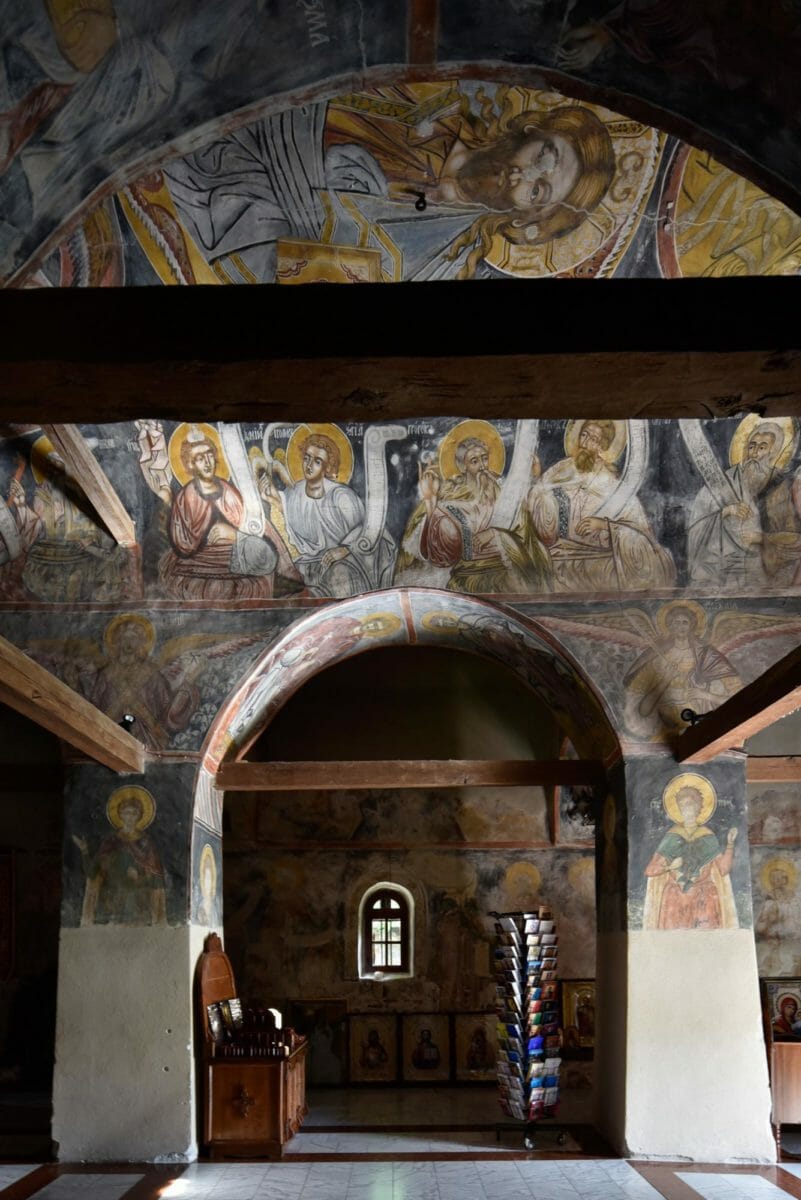
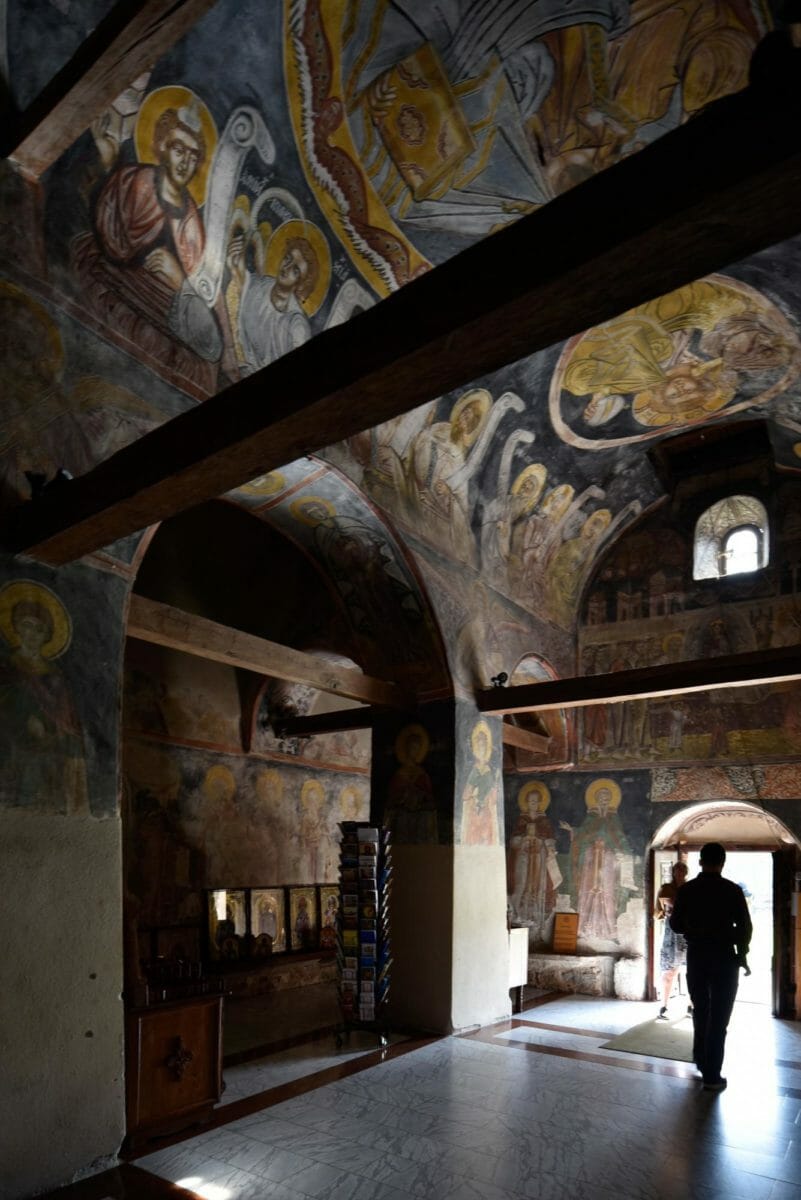

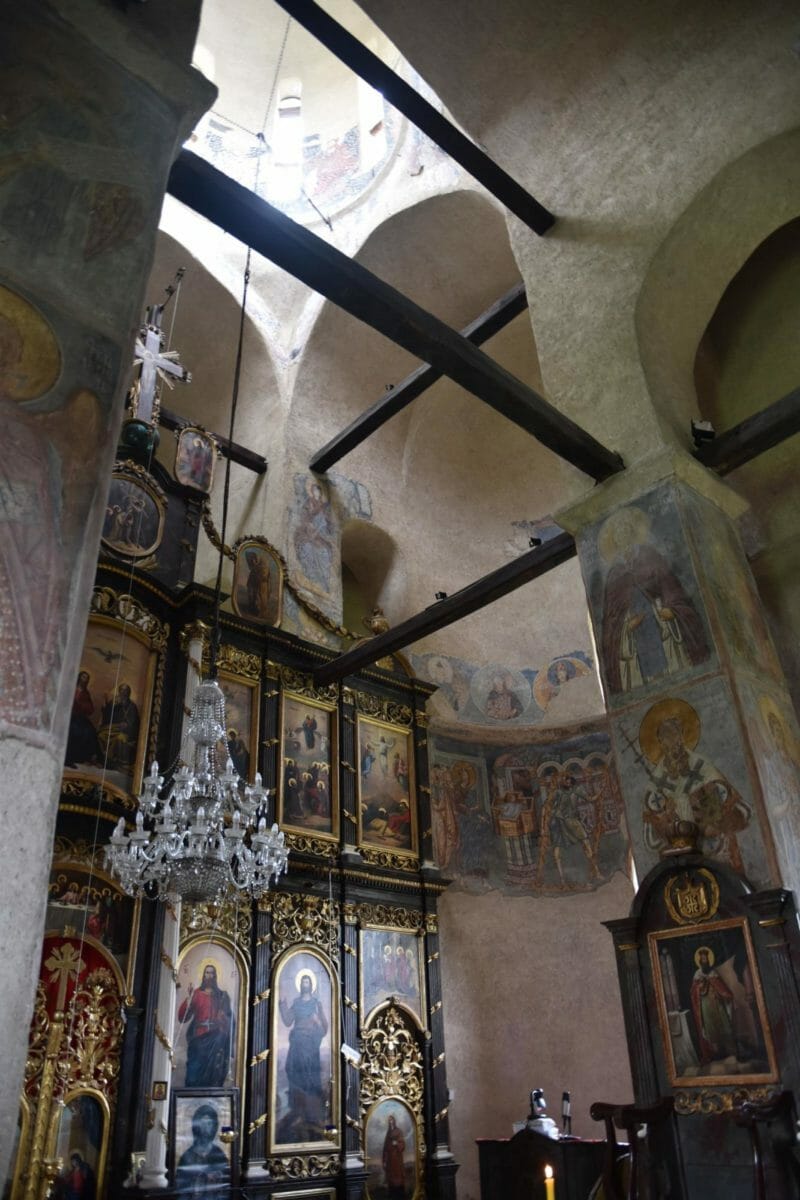
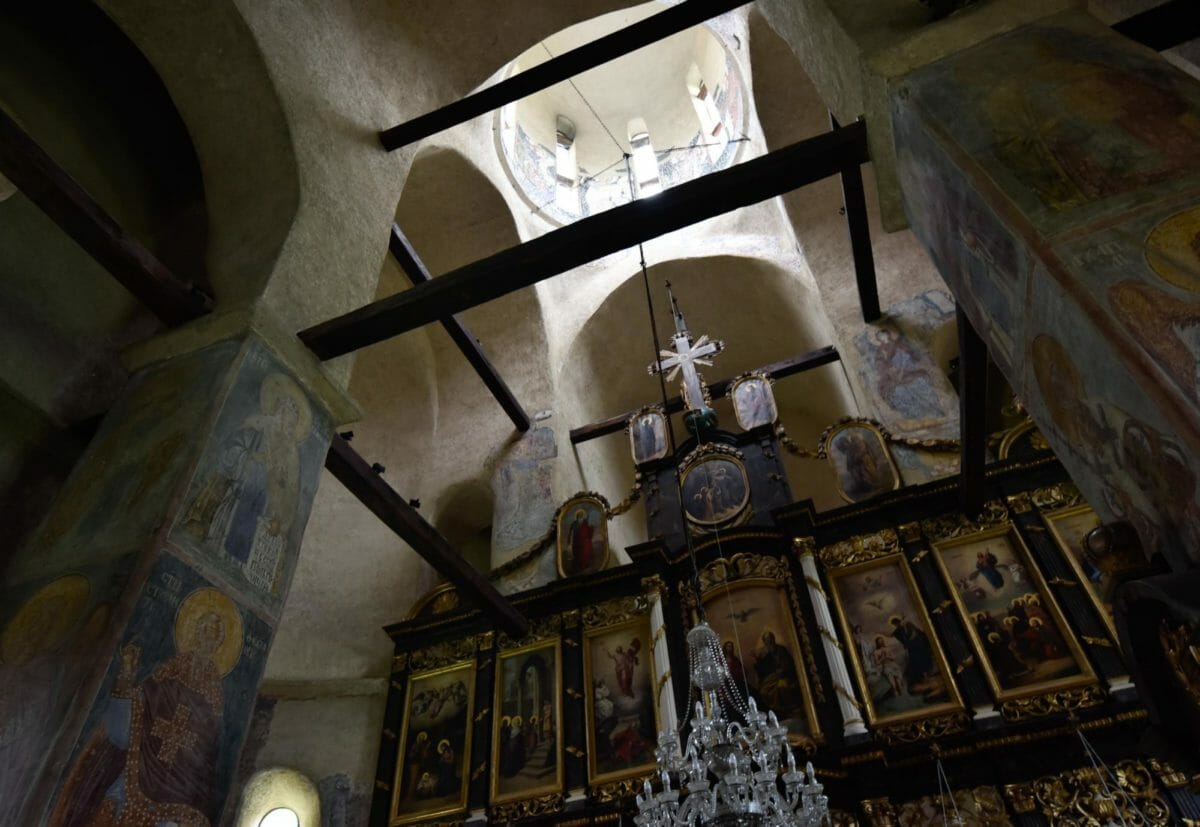
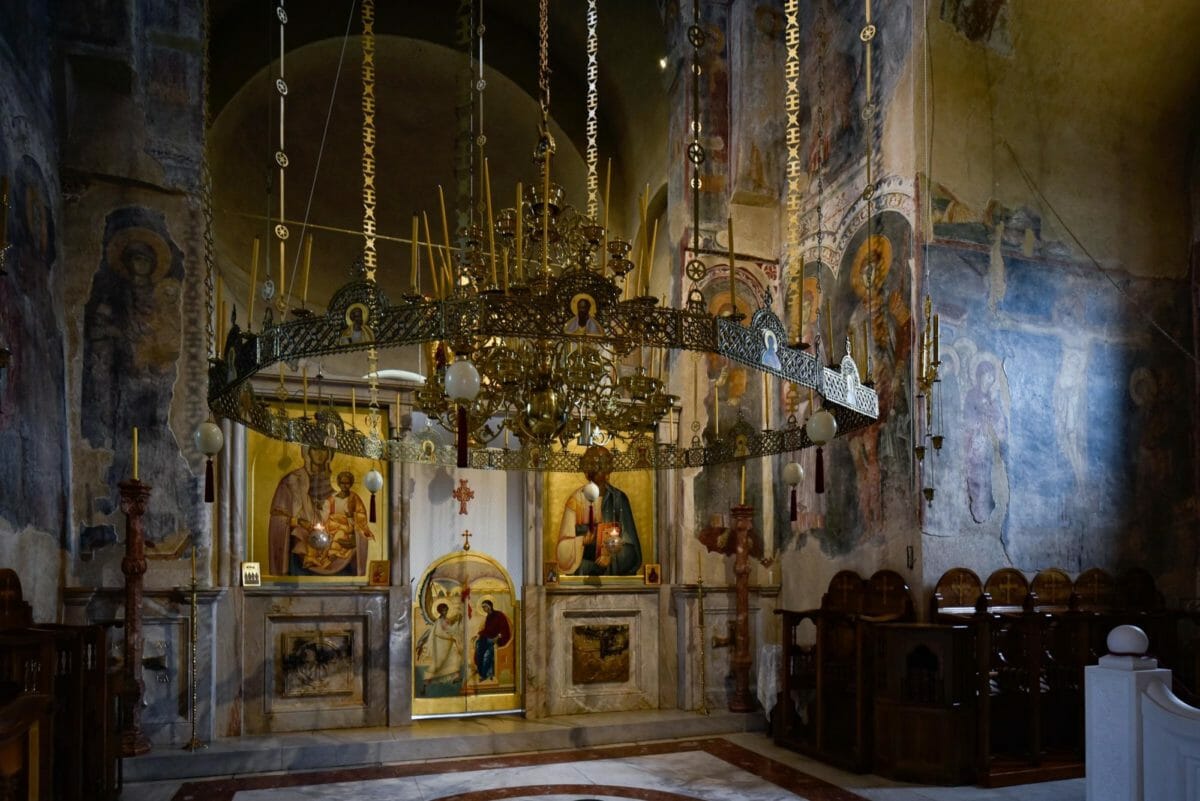
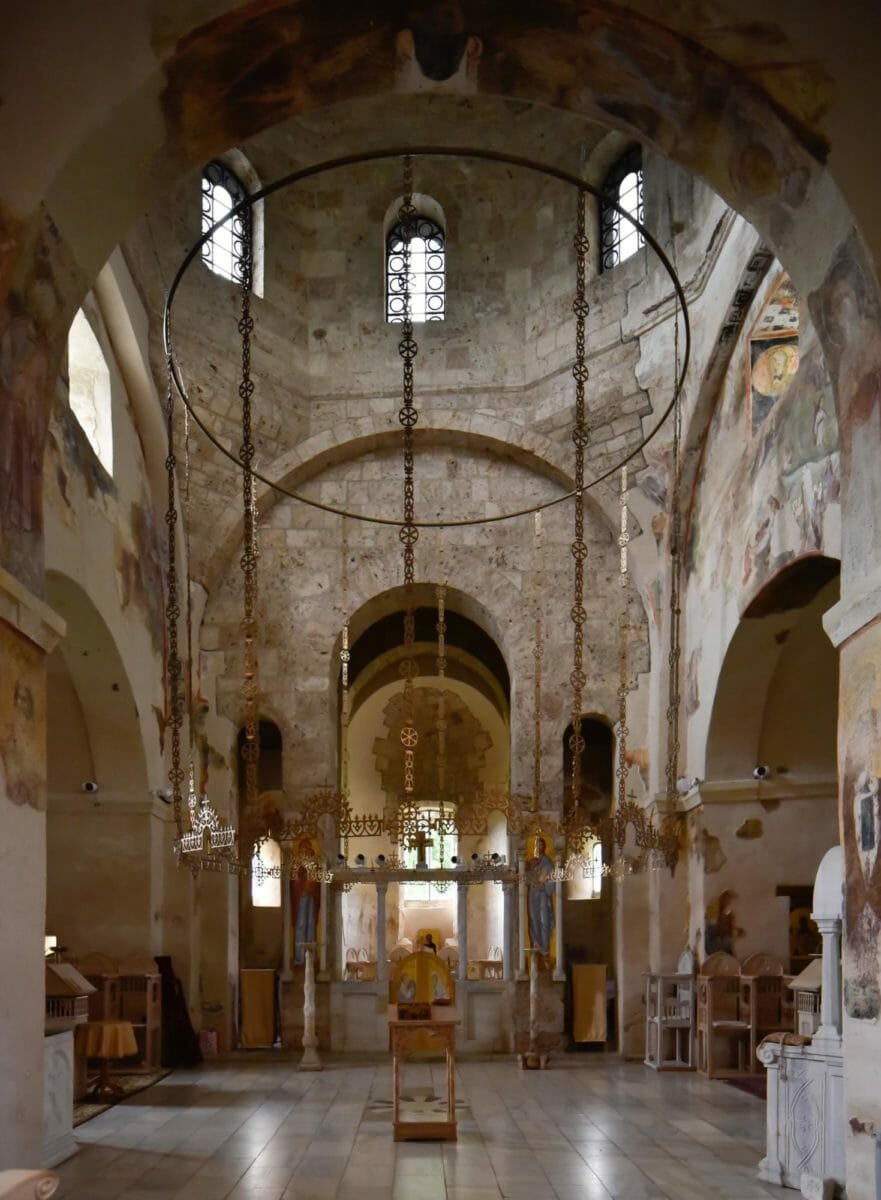
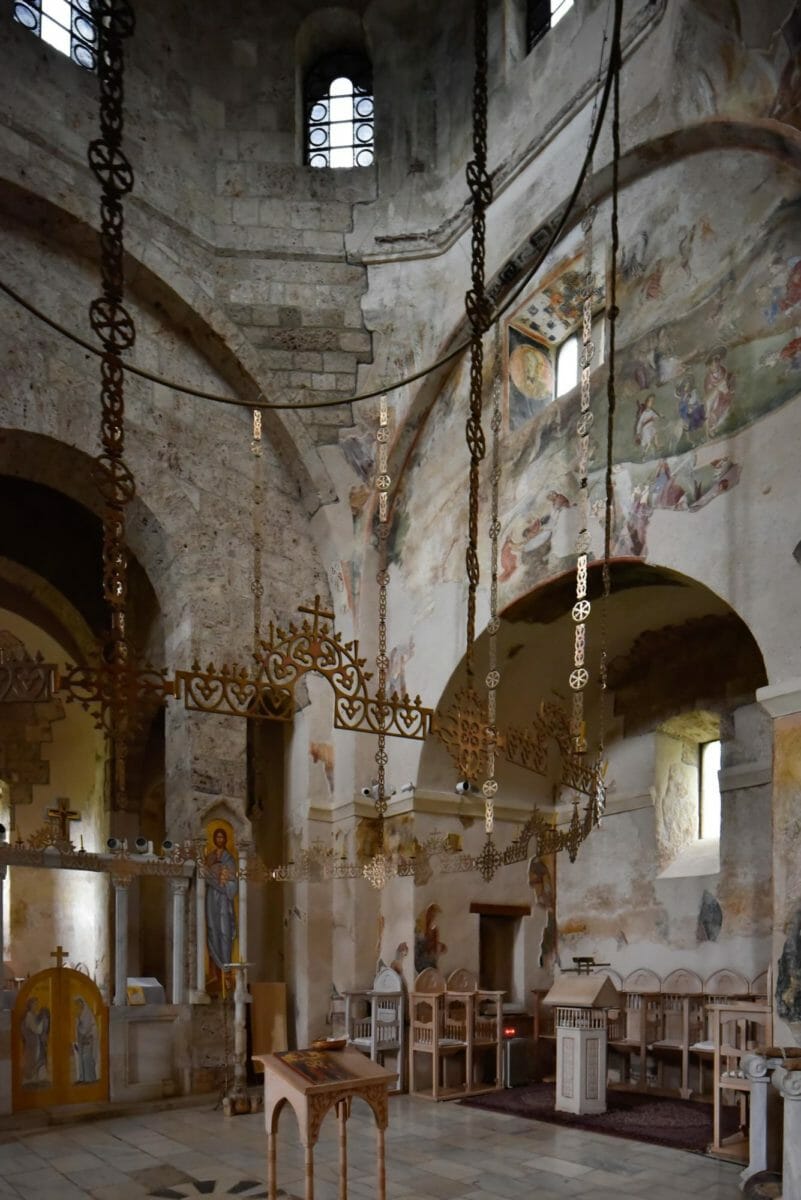
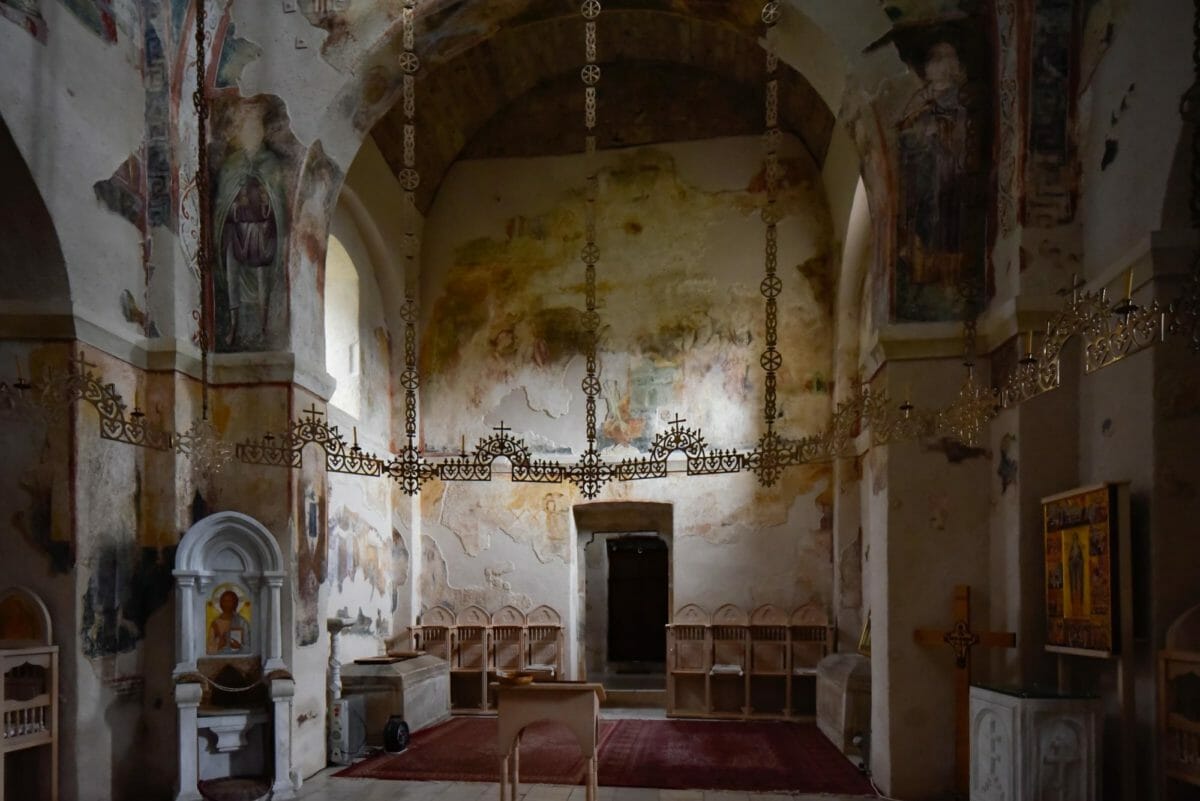
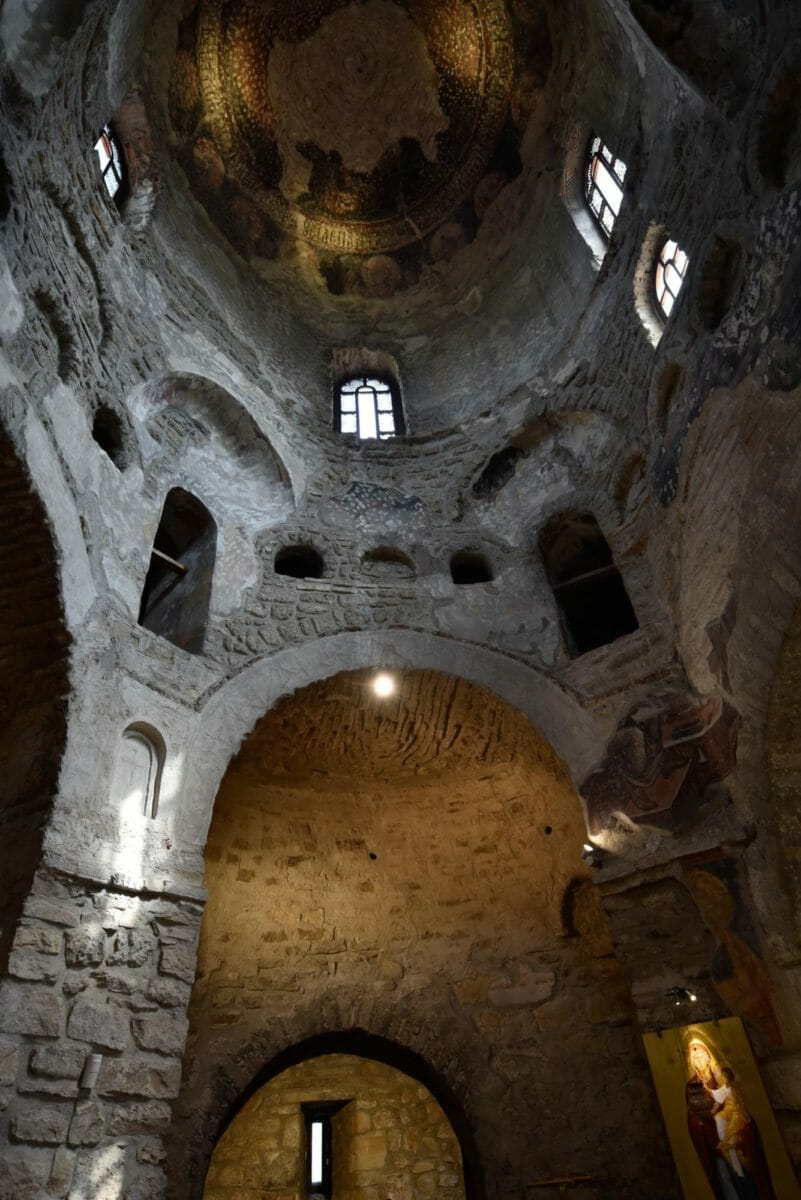
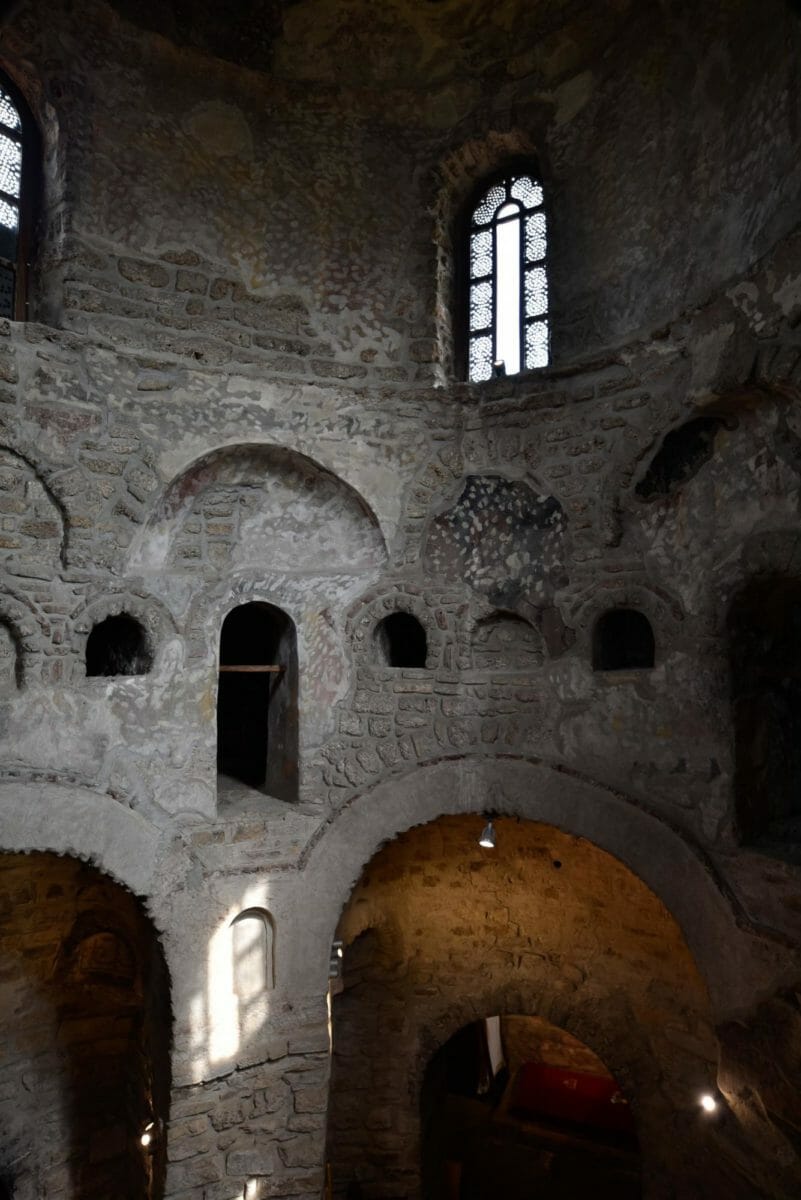
Beautiful places and photographs. Thank you.
Several of these temples are notable for their restoration of their medieval templa from the relatively recent 19th century floor-to-ceiling iconostasia many had incorporated—a restoration movement I documented in fieldwork research conducted last summer. In particular among the sites you visited, Žiča, Studenica, Manasija, and Gradac all have restored their medieval templa (the latter being a special case as the katholikon, having been largely destroyed, was rebuilt in the 1970s together with its templon). Notably, Abbot Tihon of Studenica wrote his dissertation on the development of the medieval templon in Serbia, and he defended concurrent with the restoration of the templon in his monastery. There are other examples, and Kovilj is still in via, but part of this impetus came from the influence of Fr. Ioannes Phountoules on Serbian hierarchs, monastics, and liturgical scholars. Serbia is a fascinating place for liturgical architecture right now.
Thank you for your comment. I’ll be doing another series of posts that will feature close up images of all the iconostases we saw – both the templons and the later wooden screens. I was likewise very interested to see the several styles of screens in the different churches, and to consider the merits of each style with regards to the liturgical experience and overally beauty of the space.
How lovely to see these churches. Such beauty. Thank you.
Thank you for posting the gorgeous pictures!
It’s so interesting to me (and sad) that no effort is made to restore any of the frescoes. Is there a clear reason for this?
Additionally, was the balcony under the dome in Petrova Cerkva used for cantors? It seems like the ideal place to intone canonarch style chants.
The frescoes are all under state protection and professionally conserved. In past centuries frescoes were continously overpainted and ‘repaired’ to keep the church looking fresh and complete. Nowadays, the surviving medieval frescoes are considered to be of such overwhelming historical and cultural importance that they are conserved in their fragmentary state. I agree with this judgement, because, having been there, I can assure you that the medieval frescoes are overwhelmingly better quality than the 18th-19th century frescoes, which are, in turn, overwhelmingly better than any contemporary frecoes we saw in Serbia. I’m afraid the skill and good taste to reconstruct the missing medieval frescoes appropriately is simply not present at this time.
The balcony at Petrova Cerkva is unique and enigmatic. It’s so short that one can barely stand up in it, and the windows looking into the nave are tiny and even shorter – one can only see through them in a sitting position. It seems completely impractical for singing. Dr. Timothy Patitsas suggested that it was built for the scribes who recorded the church councils that took place there. This seems very plausible – the church was built as a primatial seat and several councils occured there in the early middle ages.
Thank you, beautiful photos!
Astounding and outstanding!
The interaction of light and shadow is particularly stunning in the images from Ravanica. Thank you for posting.
Thank you for giving me the opportunity to join you during this most beautiful tour !
These pictures are exceptional, and the clarity is equally exceptional. Thank you for sharing these photographs.
Emotionally charged architecture, great photos. Thank you.
Such beautiful churches! Amazing photos.
Ancient beauty is totally captivating. Thank you for sharing!
Your photos are stunning. I am so glad to have been a beneficiary of your knowledge and guidance on this trip, and to see the structures through your camera, which far surpasses my own! What a fantastic trip.
Hello Andrew, thank you for this report. Did you learn anything on this trip about the vulnerabilities of fresco to disrepair over time that you could share for the benefit of architects and plasterers? I’m curious if most of the frescoes that undergo technical failure experience some form of delamination from their substrate, or if rather they fall apart from the surface going inwards.
Hi Baker. Mainly what I learned is that the medieval frescoes are so extraordinarily durable that they can survive almost any adverse conditions. The churches that have damaged and fragmentary frescoes were ruined and roofless for centuries. In most cases they were burned, abandoned and left to collapse in Ottoman times, then restored in the 18th or early 19th centuries, then repeatedly shelled and bombed in 19th and 20th century wars. Some of these medieval churches are only 1/3 original undestroyed structure. And yet even the most abused churches have surviving frescoes.
On the other hand, the few churches that were never devestated have their frescoes almost 100% intact, often looking as fresh and detailed as the day they were painted. You’ll see some of these in my subsequent posts.
In general, of the damaged frescoes, the damage first manifests as loss of the highlights and details, because these ‘final touches’ on a fresco are not bound to the plaster as well as the underpainting. In some cases, almost all color is gone and only the initial brush-drawing remains. But it apparently takes centuries of exposure to weather, along with fire damage, and subsequent over-plastering, to damage a fresco this badly.
Our guide did call our attention to certain technical differences from one church to another, which affected the preservation of the frescoes. Many Serbian churches had the interior walls lined with highly-porous siga stone, which holds water like a sponge and is ideal for frescoes. Such churches had better preserved frescoes than those with denser stone walls. Also, there was a conspicous difference between backgrounds painted with lapis, which remain blue, versus those painted with azurite, which have turned green-black. Finally, the churches around Lake Ohrid had the best-preserved frescoes, I suspect because of the dry windy climate.
[…] This post is part of a series. Previous posts: (Portraits of Light and Shadow in Balkan Churches – Part 1: Serbia) […]
Wonderful Andrew. They are a treasure. These photos clearly reveal the ascetic impact of good lighting and good shadow- as much the latter as the former. Having spent hundreds of hours in services on Athos, I saw how masterfully did the architects create the ‘stage’ for the liturgical use of light by creating shadow as well as illumination. The lighting, swinging and extinguishing of chandeliers, for example, would have had much less impact if done in a church fully illuminated with windows everywhere, not to speak of electrical
Lighting! The photos also show the visual impact of deep window reveals, that creat stark contrasts of light and dark faces.